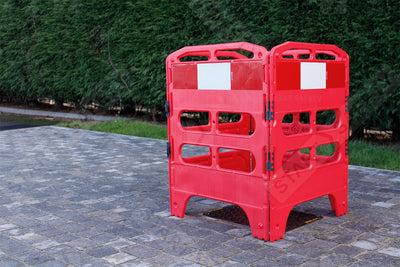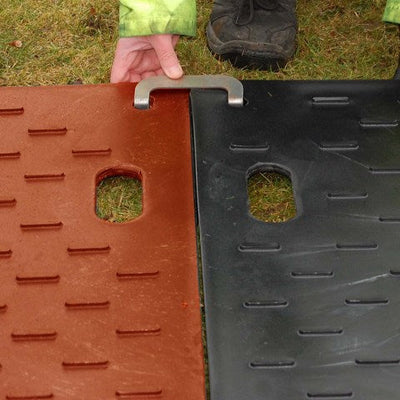10 Simple Construction Site Safety Rules and Regulations in the UK
Construction sites are dynamic, high-risk environments where safety is not just a guideline - it's a legal and moral obligation. Whether you're a contractor, project manager, or visitor, understanding construction site safety rules and regulations is vital for protecting lives and ensuring project success.
In 2024/25, 124 workers in the UK died as a result of work-related accidents, according to the Health and Safety Executive. Of these, 28% occurred in the construction sector. The most common cause of fatal accidents was falls from height, followed by incidents involving workers being struck by falling objects or becoming trapped by something collapsing or overturning.
In fact, the construction industry has a fatal injury rate of roughly 1.62-1.65 per 100,000 workers, which is 3 to 4 times higher than the all‑industry average, showcasing the need for tough rules and regulations for the sector.
Thankfully, workplace fatalities are showing a downward trend due to more stringent health and safety protocols.
In this post, Start Safety’s experts outline 10 simple construction site safety rules, explain core health and safety requirements for construction sites, and provide practical tips for improving safety on-site.
1. Wear Personal Protective Equipment (PPE) at All Times
From helmets and high-visibility jackets to steel-toed boots and safety goggles, PPE is your first line of defence. Following construction site safety requirements means making PPE mandatory for everyone - workers, supervisors, and visitors alike.
2. Follow Site Signage and Instructions
General construction site safety rules always include reading and following safety signs. These signs indicate hazards, mandatory gear, emergency exits, and restricted areas.
3. Be Aware of Your Surroundings
Construction sites are full of moving machinery, unstable structures, and dangerous tools. One of the most basic but crucial safety rules in construction site environments is to stay alert and aware of what’s happening around you.
4. Undergo Safety Induction Training
Before entering a site, all workers and visitors should undergo a safety induction. Construction site visitor safety rules and construction site safety rules for visitors must be clearly communicated, either via signage or during induction.

5. Keep the Site Clean and Tidy
Slips, trips, and falls are among the most common health and safety issues on construction sites. A clean, clutter-free site is essential for reducing risk. Keeping areas restricted and cordoned off by Chapter 8 barriers can help reduce the likelihood of slips and trips happening.
6. Report Unsafe Conditions Immediately
Creating a culture where everyone feels responsible for site safety encourages quick action when hazards arise. Workers should know who to report to and understand how many safety officers are required on a construction site, based on project size and risk level.
7. Use Tools and Machinery Properly
Misuse of equipment is a major hazard. Workers must be trained and certified to use certain machinery, in line with health and safety guidelines for construction sites.

8. Comply with Fall Protection Protocols
Falls from height are a leading cause of injury. Following construction site safety precautions, such as installing guardrails and using harnesses, is mandatory under UK construction site health and safety regulations.
9. Ensure Safe Access and Egress
Proper walkways, ladders, and emergency exits are non-negotiable. These are essential construction site health and safety requirements for both workers and visitors.
10. Conduct Regular Site Inspections
Routine inspections help enforce safety rules and regulations in construction site settings. These checks ensure compliance with the construction site safety board requirements and highlight opportunities for safety improvement.

Common Site Safety Questions
What are the basic safety rules in a construction site?
They include wearing PPE, following signs, using equipment properly, keeping the site clean, and reporting hazards - just to name a few.
How many safety officers are required on a construction site?
It depends on the project size, risk level, and regulations under the CDM Construction Design and Management Regulations 2015.
Ways to Improve Construction Site Safety
If you’re looking to go beyond the basics, we’ve put together a few tactics that’ll help improve safety on site:
- Conduct toolbox talks daily.
- Update your construction site health and safety rules regularly.
- Involve workers in safety planning.
- Display clear construction site safety board requirements visibly on-site.
Review and revise your safety policies using the latest health and safety measures in construction site management.
What’s a Toolbox Talk?
A toolbox talk, which can be called a tailgate meeting or safety briefing is a short meeting to discuss safety in the workplace. Generally a toolbox talk is done before shifts begin with the aim being to quickly refresh the knowledge of workers and raise awareness of hazards that they may come up against over the course of their shift.
Some Final Thoughts from Start Safety
Approximately 2.6 million working days are lost annually to injuries and ill health in construction according to the Health & Safety Executive - that’s around 1.3 days per worker per year.
Whether you’re making sure you have the right signage in place, preparing a visitor induction, or leading a site team, following these construction site safety rules can significantly reduce accidents and save lives. After all, safety isn’t just a checklist or box-ticking exercise - it’s a culture.
- Author





